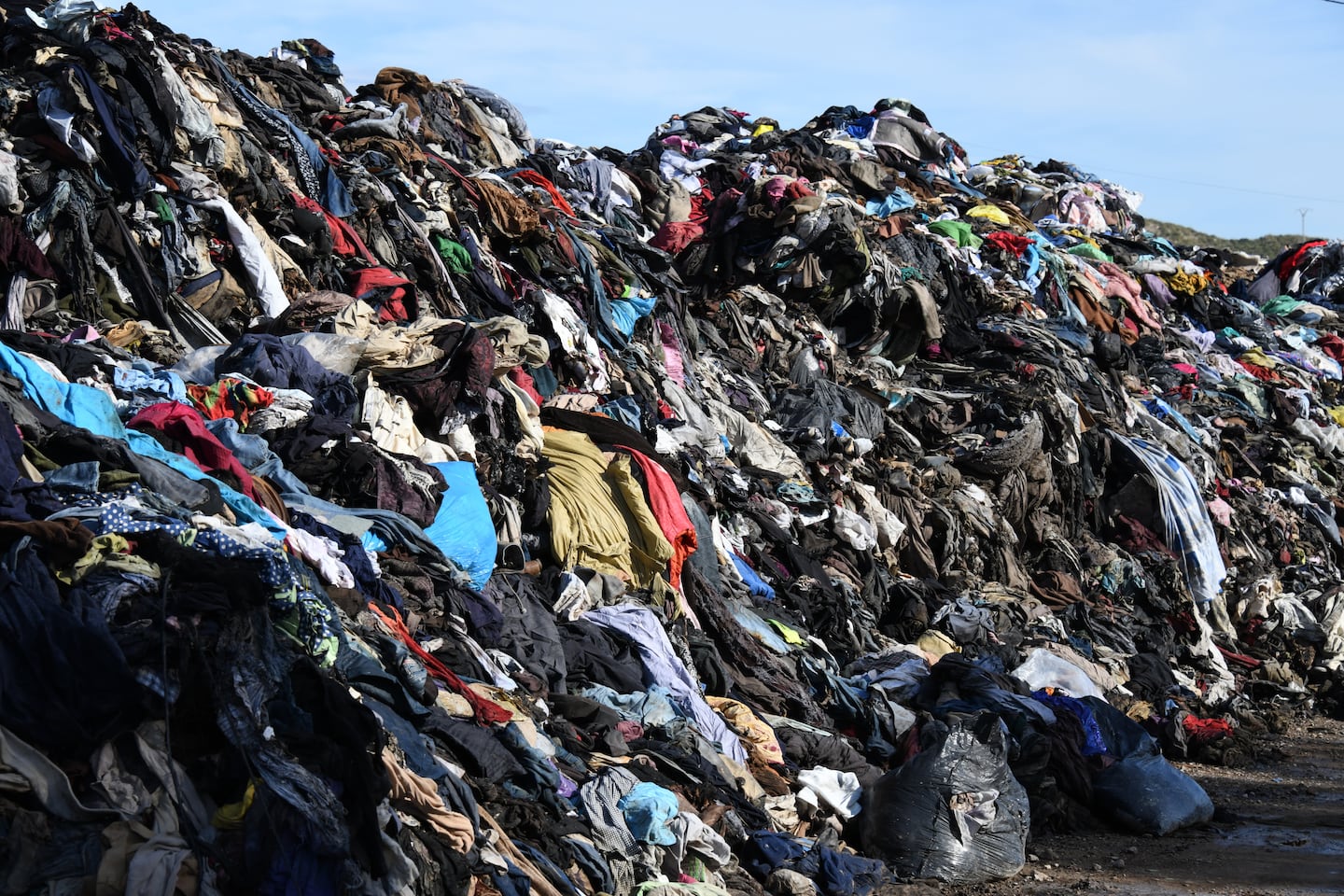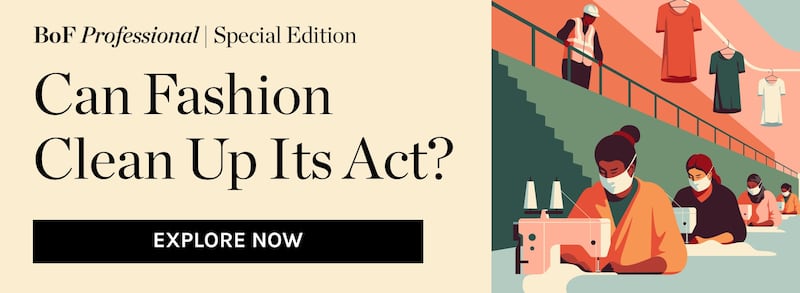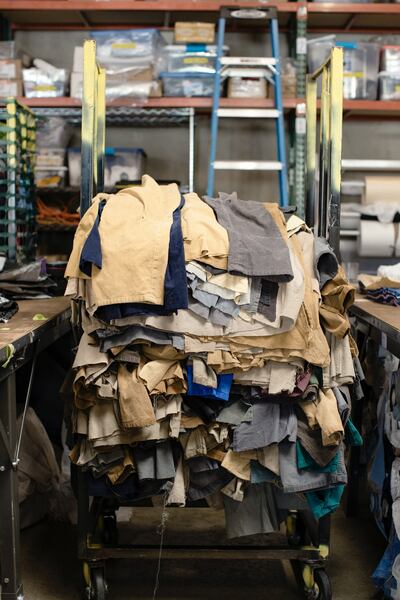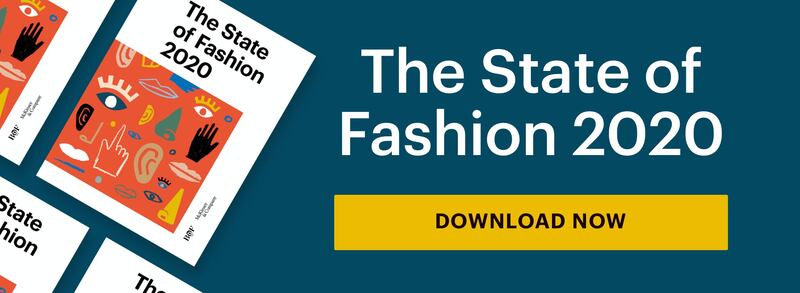
The Business of Fashion
Agenda-setting intelligence, analysis and advice for the global fashion community.

Agenda-setting intelligence, analysis and advice for the global fashion community.


This article is part of BoF’s special edition, Can Fashion Clean Up Its Act? Click here to learn more.
LONDON, United Kingdom — For more than a year, designers at Patagonia have been working on a difficult problem: how to collect, sort and transform thousands of irreparable old clothes into desirable items while turning a profit.
In November 2019, Patagonia produced around 10,000 jackets, sweaters and bags upcycled from old garments for its ReCrafted line. While the price point for the products will vary, the brand is expecting to sell the garments at a level in line with new items — ranging from a small bag ($27) to down jackets ($327). ReCrafted debuted at the opening of the brand's Worn Wear store in
Boulder, Colorado.
The project turbo-charges long-standing efforts by designers to upcycle old clothes and reduce the waste generated by the fashion industry. Historically, such projects have largely consisted of small-scale capsule collections because working with old garments is complex and difficult to scale.
ADVERTISEMENT
"It's really hard to work with old garments at various stages of use and break down," says, Patagonia's director of corporate development, Alex Kremer, who oversaw the ReCrafted project. "It takes a crazy amount longer; it's a much more daunting process to see a pile of jackets and to make something out of them than out of a roll of fabric."
If upcycling is a challenge for California-based Patagonia, which has a long-standing track record of operating at the forefront of efforts to clean up the fashion industry, then it will be even more difficult for the average apparel brand. However, tackling the wider problem of waste in the context of a more circular system has become a priority for a growing number of fashion companies.

Sorting by colour | Photo: Kern Ducote
The focus reflects both the scale of the problem and the fact that tangible and measurable solutions are now possible. According to the Ellen MacArthur Foundation, the global fashion industry produces about 53 million tonnes of fibre every year. More than 70 percent of that ends up in landfills or on bonfires. Less than one percent is reused to make new clothes.
It’s an environmental impact issue that consumers can easily understand, and one that companies can demonstrate they are making progress to tackle. Though waste reduction is by no means simple, it can be easier to communicate than efforts to reduce emissions or tackle water use in obscure parts of the supply chain.
"Circularity is quite tangible," says Sarah Needham, knowledge exchange manager at UAL, London College of Fashion's Centre for Sustainable Fashion. "Taking steps towards recycling and encouraging the circular economy is something [brands] can grab hold of and make concrete steps towards."
Still, more ambitious solutions and higher levels of investment are needed for waste reduction. Heading into 2020 fashion companies will need to leverage new technologies and grow consumer appetite for upcycled or recycled clothes. According to the 2019 survey of apparel company chief procurement officers by McKinsey, increasing the use of recycled fibres is one of four innovation-led disruptions likely to become prevalent throughout the industry by 2025.
Signs of progress are on the horizon, with a slew of companies already making efforts to meet near-term targets like providing training in sustainable and circular design to employees. Elsewhere, new recycling technologies and new business models focused on digital rental and resale offer promising opportunities to extend the life of old clothes.
ADVERTISEMENT
In spite of the growing momentum, the industry’s efforts to tackle its waste problems are still at an early stage. Many of the solutions currently in the works don’t go to the root of the problem: the need to make and consume less.That makes efforts to enhance the long-standing practise of upcycling particular compelling in fashion’s nascent war on waste. Reworking existing garments or fabrics doesn’t require virgin materials and, in most cases, it doesn’t require cutting-edge technology either. At its simplest, upcycling represents relatively low-hanging fruit in fashion’s quest to reduce its impact; huge amounts of waste are generated in the manufacturing process and reducing that can be relatively easy and bring significant economic benefits.
Many of the solutions currently in the works don't go to the root of the problem: the need to make and consume less.
“It’s a hierarchy,” explains Michael Sadowski, research fellow at the World Resources Institute. “You start with what’s in front of you and what’s logistically and technically possible, and then go on to focus on the hard stuff.”
Particularly for younger brands that want to operate in a more conscious manner, working with offcuts, or excess materials, is also financially compelling. "Throwing stuff away in a landfill, you're also throwing away money," says Jonathan Cohen, whose namesake brand is introducing a direct-to-consumer line of upcycled garments in December 2019, made from their own deadstock. It's something bigger brands are looking at too. For instance, Burberry has partnered with luxury brand Elvis & Kresse to repurpose its leather offcuts into handbags and other accessories.
To be sure, scaling such efforts requires significant adjustments to the industry’s traditional mode of operating, swapping out the freedom of choice provided by virgin materials for the creative challenge presented by limited volumes or quirks and imperfections in the fabric or offcuts available.
“You just have to disconnect from a preconception of an existing supply chain model and really think creatively around what’s happening,” says Graeme Raeburn, performance director at London-based fashion brand Raeburn, which has built a business out of reworking surplus fabrics and garments.
There are logistical challenges too. Fashion’s sprawling and opaque supply chains mean that identifying and sourcing deadstock fabrics is not always straightforward. Often times material will sit in far-flung factories with little visibility on what is available. When Cohen made the decision to find ways to use his offcuts, he first had to take time tracing his supply chain and negotiating with his mills. “It was like starting the relationship all over again with your fabric mills,” says Cohen.
Industrial design studio and innovation consultancy Alexander Taylor is planning to launch a brand next year using leftover fabric sourced from a single manufacturer in China.
Fashion's sprawling and opaque supply chains mean that identifying and sourcing deadstock fabrics is not always straightforward.
Simply understanding the volume and quality of materials available has proven a laborious process that involved combing through stacks of catalogues and physical swatches.
ADVERTISEMENT
Upcycling complete garments is significantly more challenging than upcycling fabrics.
To make it work, brands need to rethink the way they design clothes and roll out take-back schemes that give them access to post-consumer waste.
At American fashion brand Eileen Fisher, designers are already looking to rework the materials they use when making new garments to make it easier to keep clothes in play when they get to the end of their life. Fabrics that contain a wide variety of fibres can complicate the life cycle of a garment. “That’s a problem that we take [to] the design team and say, ‘Well is there an alternative to this fabric?’ Do you know how can we simplify it?’” says Shona Quinn, the brand’s sustainability leader.
In many ways companies like Patagonia are uniquely positioned to lead such efforts because of the years they have already spent working to reduce waste. The pioneering brand has a well-established take-back and resale programme already in place, providing the company with a sophisticated infrastructure to sort and process old clothes.
Even so, upcycling is far from simple.
When you’re dealing with waste as your raw material, you have less control over what comes through the supply chain. A red jacket from twenty years ago might be a completely different shade from one produced two years ago, making it difficult to pair the two when constructing a new garment. Equally, while a roll of fabric can be cut to any shape the designer likes, there’s a limited amount that can be achieved with a size XS jacket.
Despite the many challenges, Patagonia still views upcycling as a model that others in the industry can follow — albeit one that will attract a limited number of followers. “I just can’t imagine that in 10 years or 20 years the flaws in this model will be acceptable to people as a whole,” says Vincent Stanley, Patagonia’s director of philosophy.
Related Articles:
[ These Designers Want to Fight Climate Change. Just Don't Call Them 'Sustainable'Opens in new window ]
[ How Sustainability Became Fashion’s New BattlegroundOpens in new window ]
[ How to Make Sustainable Fashion People Will Actually BuyOpens in new window ]

The trial of Colombian designer Nancy Gonzalez for smuggling alligator and snakeskin handbags into the US shone a rare public spotlight on the trade in the exotic skins used for some of fashion’s most expensive and controversial products.
Europe’s Parliament has signed off rules that will make brands more accountable for what happens in their supply chains, ban products made with forced labour and set new environmental standards for the design and disposal of products.
Fashion’s biggest sustainable cotton certifier said it found no evidence of non-compliance at farms covered by its standard, but acknowledged weaknesses in its monitoring approach.
As they move to protect their intellectual property, big brands are coming into conflict with a growing class of up-and-coming designers working with refashioned designer gear.